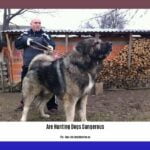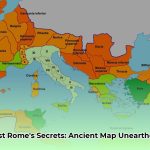When envisioning ancient Greece, one typically conjures images of profound philosophers, democratic assemblies, and the glory of the Olympic Games. Yet, integral to this vibrant civilization, often overlooked, were their four-legged companions: dogs. Far from being mere pets, these canines were deeply woven into the fabric of daily life, culture, philosophy, and even the very spirit of ancient Greek society. They served as diligent guardians, skilled hunters, crucial vermin controllers, and profound symbols of unyielding loyalty. This exploration delves deep into the multifaceted roles and the enduring spirit of canines in a civilization that profoundly shaped much of our modern world, revealing how their legacy resonates even today.
Canine Chronicles: Breeds, Roles, and the Fabric of Ancient Greek Life
Ancient Greece boasted a surprising diversity of canine companions, each meticulously bred for specific purposes deemed essential to societal function. These ancient Greek canines were not mere embellishments; they were indispensable workers, valued for their unique contributions.
Guardians of the Polis: The Mighty Molossians
Among the most formidable of ancient Greek dogs was the Molossian, a large, powerfully built breed originating from the rugged region of Molossia in Epirus. These dogs, ancestors to modern Mastiffs and St. Bernards, were the ultimate symbols of protection and status. Owning a Molossian indicated wealth and security, akin to owning a formidable security system and a luxury vehicle combined. Their primary role was to guard sprawling estates and protect valuable livestock from predatory wolves. So vital were these animals that the ancient Greeks innovated a unique protective measure: the spiked dog collar. Crafted from metal or leather with riveted spikes, this collar was designed to shield the Molossian’s throat from the jaws of a wolf during an attack. This practical invention underscores the immense value placed on these steadfast protectors, reflecting a society that deeply appreciated and invested in its working animals.
Agile Hunters: Laconian, Cretan, and Other Hounds
Beyond their brawny guardians, the Greeks relied heavily on swift and agile hunting dogs. The Laconian hound, originating from Sparta, was renowned for its exceptional speed and keen scenting abilities, making it an ideal partner for chasing down hares, deer, and other game across varied terrains. Similarly, the Cretan hound, often noted for sharing characteristics with its Laconian counterpart, excelled in the pursuit of quarry. Xenophon, a prominent Athenian historian and general, meticulously documented the training and care of these hunting dogs in his treatise Cynegeticus (circa 360 BCE). He provided comprehensive advice on everything from selecting the right breed for specific prey to appropriate naming conventions and the use of leashes. Such detailed guidance highlights the deep, practical partnership between hunter and hound, showcasing their indispensable role in providing food and sport.
Everyday Heroes: The Versatile Alopekis and Melitan
Not all ancient Greek dogs were giants of the hunt or formidable guards. Smaller breeds also played crucial, albeit less glamorous, roles. The Alopekis, a diminutive dog whose name means “small fox” in Greek, was a master of vermin control, diligently keeping mice and rats away from precious food supplies in homes and granaries. Depicted on ceramics dating back to 3000 BCE and on grave steles, these agile dogs were also cherished companions, particularly for women and children, offering a sense of comfort and security within the household. The Melitan, often identified with the modern Maltese, was another widely respected small breed, frequently chosen as a subject for decorating ceramic drinking vessels. The presence of such specialized breeds, evident in ancient writings and artwork, points to a thoughtful and organized approach to Greek dog breeding, emphasizing specific traits for diverse practical and companionship needs.
Naming and Care: A Glimpse into Canine Life
The ancient Greeks had specific conventions for naming their dogs, reflecting the importance of character and function. Xenophon advised owners to choose short, often one or two-syllable names that expressed courage, speed, or other valued canine traits. Examples include “Psyche,” “Pluck,” “Blazer,” “Fury,” “Killer,” and “Dash,” as well as “Impetus” (Xenophon’s own dog’s name) and “Avra” (meaning breeze), the name given by the mythical huntress Atalanta to her dog. Interestingly, the Greeks typically did not give their dogs human names, further distinguishing their animal companions.
Beyond naming, the care for these animals was surprisingly advanced. Veterinary medicine was well-established by the time of Hippocrates (circa 460 – circa 379 BCE), and people routinely availed themselves of veterinarian services. The Roman writer Arrian, highly fond of dogs, advised owners to praise their dogs often, “pat him with your hand and praise him, kissing his head, and stroking his ears, and speaking to him by name.” This affectionate advice demonstrates a deep understanding of canine psychology and the emotional bond shared, much like dog owners today.
Echoes in Eternity: The Cultural and Philosophical Significance of Canines
The relationship between ancient Greeks and their dogs transcended mere utility; it was profoundly emotional and symbolically rich, interwoven into the very fabric of their society, mythology, and philosophical thought.
Loyalty Personified: Argos and the Human Element
Perhaps the most poignant and enduring example of canine devotion comes from Homer’s epic, the Odyssey. After twenty long years of absence and disguise, Odysseus returns to Ithaca, recognized only by his faithful old dog, Argos. Despite Odysseus’s inability to acknowledge him due to his disguise, Argos wags his tail and, having seen his master one last time, passes away. This timeless tale captures the profound emotional connection and unwavering loyalty that ancient Greeks felt for their animal companions. Similar expressions of grief and love are found in historical anecdotes, such as the story of Xanthippus’s dog. When forced to evacuate Athens during the Persian invasion, Xanthippus’s dog swam alongside his master’s ship all the way to Salamis, only to die of exhaustion upon reaching the shore. Xanthippus, deeply moved, buried his loyal dog in a special place known even today as the “Dog’s Tomb.” These narratives highlight the deep, universally relatable bond between humans and their canine friends.
Dogs in Myth, Art, and Philosophy
Dogs permeated Greek mythology, often serving as powerful, multifaceted symbols. Cerberus, the terrifying three-headed hound guarding the gates of Hades, epitomized the boundary between life and death, ensuring no mortal could escape the Underworld. His venom-foaming jaws and snake-like tail, as described in Hesiod’s Theogony, solidified his place as the ultimate guardian. Artemis, the formidable goddess of the hunt, was frequently depicted with her pack of immortal golden-red hounds that never tired and always caught their prey, symbolizing her wild independence and prowess. Hecate, the mysterious goddess of witchcraft and magic, was so closely linked to dogs that their barking was believed to herald her unseen approach. Even Zeus, as an infant, was guarded by golden hounds in Crete. The impossible chase between Laelaps, the dog fated to catch anything, and the Teumessian Fox, fated to never be caught, became a cosmic riddle, resolved only when Zeus turned both into constellations – Laelaps becoming Canis Major (the Greater Dog). The star Sirius, Orion’s faithful hunting dog, was watched by ancient farmers as its first appearance before sunrise marked the “dog days of summer,” signaling extreme heat.
Philosophical thought also embraced the canine. Plato, a student of Socrates, famously referred to dogs as “true philosophers” in his Republic. Socrates himself observed dogs’ innate ability to distinguish friend from foe based on “a criterion of knowing and not knowing,” commending their natural wisdom and love for truth. The Cynics, a prominent philosophical school founded by Antisthenes, another student of Socrates, derived their name from kynikos, the Greek word for “dog-like.” This was due to their austere lifestyle, which shunned luxury and embraced a simple, unadorned existence, mirroring the unpretentious nature of dogs. Diogenes of Sinope, the most famous Cynic, fully embraced this philosophy, living an ascetic life on the streets of Athens, owning nothing, and relying on the generosity of others, truly living “like a dog.”
Archaeological discoveries further solidify this profound bond. Tombstone epitaphs expressing deep grief for lost canine companions have been unearthed across ancient Greece, offering tangible proof of the deep affection held for these animals. Depictions on pottery, carvings, and grave steles show dogs in various roles – playing with children, accompanying hunters, or simply sitting beside their owners, underscoring their omnipresence and emotional significance in Greek life.
Dogs in Conflict: Presence, Not Participation
While dogs were not typically trained as direct combatants in ancient Greek warfare, they were certainly present during conflicts. Accounts from Aeneas Tacticus, a Greek military writer, describe dogs used for guard duty during sieges, alerting defenders to approaching enemies, and even functioning as messengers with messages in their collars. Alexander the Great’s dog, Peritas, famously accompanied him on his campaigns, with some later embellishments claiming she saved his life. While ancient sources like Plutarch and Arrian do not corroborate these heroic battlefield feats, Plutarch does mention Alexander’s grief over Peritas’s death and his decision to name a city in her honor. Another moving account tells of the dog of successor general Lysimachus remaining by his master’s corpse following a battle. These stories illustrate that while not “war dogs” in the modern sense, dogs were loyal companions even in the tumultuous context of ancient Greek warfare.
Enduring Echoes: The Timeless Bond
The detailed insights into ancient Greek dogs reveal a civilization that not only utilized these animals for practical purposes but deeply cherished them as companions, symbols, and even teachers. The Molossian’s protective spirit lives on in breeds like the modern Mastiff, while the Alopekis continues to be a beloved companion in Greece today. The philosophical reflections on canine loyalty and wisdom continue to resonate in contemporary discussions about the human-animal bond.
The legacy of dogs in ancient Greece illuminates a profound, unwavering connection between humans and canines that transcends centuries. These are not merely stories from a distant past but timeless narratives of a relationship that continues to thrive and evolve, reminding us of the deep impact our four-legged friends have had, and continue to have, on our lives and culture. The loyalty demonstrated by Argos, the wisdom observed by Socrates, and the everyday presence captured in art and epitaphs are testament to a bond as old as civilization itself—a bond that truly extends “beyond pets” into the very essence of shared existence.
- Unearth ancient rome roads: Empire’s power and modern highway’s origin - August 15, 2025
- Discover geography of ancient Rome: Empire’s secrets revealed (2024 insights) - August 15, 2025
- Unveiling Ancient Roman Empire Geography: Power & Legacy Secrets - August 15, 2025
















